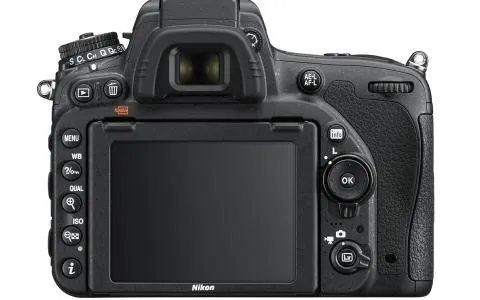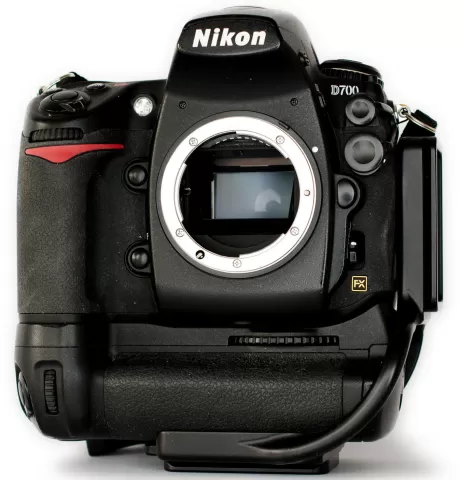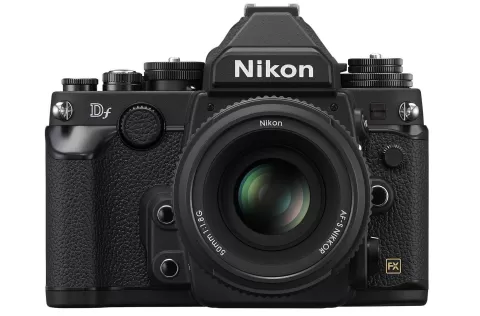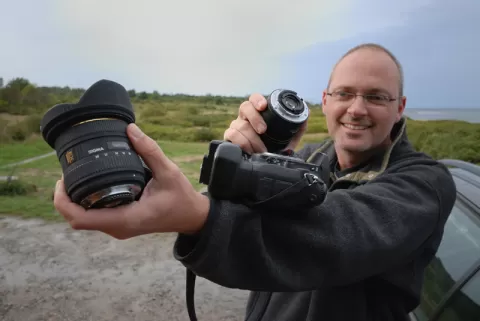A landmark in my camera life - the change from Minolta to Nikon
My first ever non-Minolta SLR was to be a Nikon. I will discuss the motivation for this change of brand at a later time, and let this piece deal with the D200 and why I chose that particular model over other Nikons -- and over Canons.
And I love it!
Before going further into details about the Nikon D200, let me just get one thing straight: it's a great camera, and all my fears of the stuff I lost in changing from my Minolta Dynax/Maxxum 7D have been put ashame. The Nikon is just as good in its own way and better in many others.
I will not have a hard time getting used to the Nikon feel, and the images I have produced so far have been excellent, and if not beyond my wildest dreams, then at least surprisingly fine right out of the camera.
The number of facilities on this camera are infinite and learning to know them and master will take a while. This is quite enough camera for even the most savvy photographer, and I don't think I will outgrow it right away.

[Nikon D200, Nikkor 18-70, f3.5-4.5G ED]
It's growing on me
January 2007: The D200 is a picture machine, and I like it better and better for every shoot I do with it. It's rugged, has all the facilities I need and operating it has soon become second nature -- like it was on my Minolta-gear.
I have shot many thousand pictures with it and am constantly surprised byt it's precision. The exposure in particular is stellar, and I never ever worry about it, feeling the urge to check the display after each shot or each changed scene. The camera just performs. The few missed shots I have made have mostly been caused by my own forgetfulness - not remembering to reset exposure compensation or other manual overrides I have made. I devised the PISO-rule for myself - I remind myself to check Program and ISO before shooting. The camera can't do anything to override those. I have left it set to 400 or 800 ISO several times, resulting in noisy images from daylight shoots.
I routinely underexpose a bit (0.75 f-stops) because I like the saturation, but even leaving things in the default settings will still give me beautiful shots every time.
Now I just need to stock up further on good glass for the camera.

[Nikon D200, Nikkor 18-70, f3.5-4.5G ED, SB-800 Flash]
Likes and dislikes
In order to start somewhere, I have decided to list my immediate likes and dislikes about this camera. I will expand the list as I find more to add, but just start head over heels with whatever comes to mind. There will probably be some comparisons to my Minolta Dynax/Maxxum 7D, because that's the background I came from when changing to Nikon.
Likes
- Pressing the shutter release is a great thing on this camera. The feeling and the sound is just great, balanced, quick and smooth. The Nikon engineers have done a beautiful job on this.
- Speed is great. The D200 shoots some 4-5 pictures per second, and taking series of rapid shots is really something where this body excels. It buffers 21 shots and then goes down to a slower frequency. As soon as the buffer is emptied, you can resume speed shooting. This seems to work really well, and 20 pictures in 4-5 seconds is likely to be more than adequate for me.
- Build and weight is fine for me. It's not a light camera, but not as heavy as some of the real hogs on the market. It's a bit lighter than the 7D, particularly since I have no real heavy weight glass yet. And it's environmentally sealed, so it can take some abuse. And I will abuse it. My cameras get their beatings.
- The display on the back is bright, sharp and has a resolution that makes it useful in judging image quality and sharpness properly.
- A grid overlay in the viewfinder is just perfect as an aide to get horizontal lines horizontal and to remind you of the rule of thirds. It can be selected and deselected according to taste.
This is just the first few things that has sprung to mind. I'm sure I will find many more things to love as I start using the camera more extensively.
Dislikes
- I miss some of the dials on the 7D. The physical presence of over- and underexposure settings, program choice and other settings on the 7D are all embedded in small pushbuttons, command wheels and reading the top display on the D200.
- Not using the back display to show exposure information. Why not? I mean, you have a great, big, bright, bitmapped color-display on the camera... why do I then have to look at a small, dull B/W LCD-display on the top of the camera while fiddling all those settings? It's not logical, and both Nikon and others should look to Minolta to see how the back display can be utilized. I'm really gonna miss that. Make it a part of a coming firmware upgrade Nikon! Just an option, so that people who don't like it can turn it off.
- Although the camera feels great in the hand, it does not feel as great as it could. The Nikon is not nearly as ergonomically correct as my Dynax/Maxxum 7 for film, which has the most fantastic stick-in-the-hand feeling of any camera I know. And it feels equally well vertically as it does horizontally. Not so the Nikon. There's a huge difference between the vertical grip and the ordinary grip, and the buttons are placed differently on the two. The vertical grip is also thick and square rather than smooth and shaped to fit the hand. It is in essence a container for the batteries, on which an engineer has stuck a release button and some control dials.
- The command dials are a fine construction and work as expected in most cases. Their operations can be tailored in many ways, but for some reason not completely freely. You cannot move aperture control from the front to the back. That means that in A-mode the front dial is aperture and the rear one exposure compensation (I have set it to that). But in S-mode it's the rear dial that takes care of the shutter speed, while the front one does the compensation. Not a big issue, but why can't I just put any of them where I want? And when in P-mode, can't I please get both dials to do the identical exposure regulation? Unless I assign the front dial to exposure compensation, it does nothing... why?
This list may seem pretty long and extensive, but none of these points are really severe, and the qualities of the camera overshadow the flaws. Many of my issues are of course also a result of my former experience with other cameras. Old ponies and new tricks, you know...
Why not Canon?
I could have bought Canon, and I'm sure that Canon makes some superb cameras. I recently handles an EOS 30D, and that certainly felt quite nice.
But the Nikon felt just a bit nicer, and I liked the controls and handling of the Nikon a bit better. I also have a few friends and colleagues who have Nikon, and that would enable some cross-pollination of lenses and accessories as well as knowledge and competence. I have always been frustrated about being the only one in the gang who uses Minolta and because of that not being able to lend and borrow gear.






